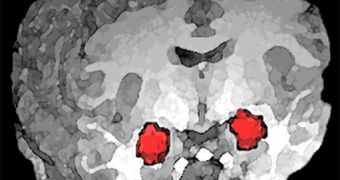According to an American researcher, it could be that understanding the architecture of the brain may help experts shed more light on why we behave the way we do. Neuroanatomist Jacopo Annese believes that thought, memories and behaviors are inscribed in our individual neural structures.
The expert is the leader of the University of California in San Diego (UCSD) Brain Observatory. He is the one who launched the Digital Brain Library back in 2008, with funding from the US National Science Foundation (NSF).
At the time, the investigation was spurred by the fact that the expert enter possession of a brain that used to belong to a man who couldn't keep memories for more than 20 seconds. That was the first of 35 donated brains the researchers has analyzed since.
In order to study them, the expert and his team need to cut the brains into very small slice, from the front to the back. The process is very lengthy and can last for several days, producing a total of over 3,000 slices per brain.
None of the slices is thicker than a human hair. The reason why they are so thin is because they can provide a more detailed view of how the brain is put together. After they are produced, all slices are put in a microscope and digitized, and then reassembled in a computer model.
Thus, experts produce a 3D computerized view of a person's brain. “We're studying brain structure and trying to understand how the architecture of the brain supports our behavior, our thoughts, our memories, our way of thinking,” Annese explains.
“If somebody has a pattern of behavior during their life, is that pattern of behavior reflected in the structure of their brain? Can we see it?” the expert asks. These are the questions that his group is trying to answer, again with NSF funding.
At times, he even goes out to search for the relatives of people whose brains he digitizes. “It is fascinating to try and connect a life with the actual brain,” Annese explains. However, this can be very difficult at times, and so he is looking for commitment from the living
Bette Ferguson, a 92-year-old former actress, is willing to donate her brain after death. She believes that doing so will enable researchers to learn more about how our minds operate, which is a good thing.
Annese will use data from his interview with willing donors to create skill or hobby categories on paper, and then look for common structures in those brain. Through this complex process, he hopes to be able to determine whether real-world experiences and behaviors modify the brain's structure.

 14 DAY TRIAL //
14 DAY TRIAL //